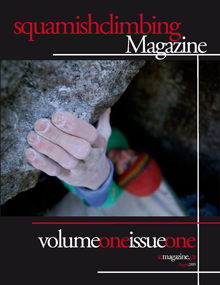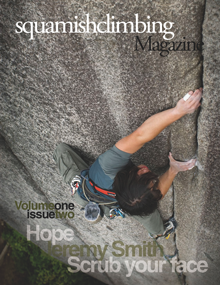The following article is by Tyler Thompson. Tyler Thompson is an ACE certified personal trainer, climbing bum and movement enthusiast based out of Vancouver, Canada. He recently launched his own website and can be found at thompsonfitness.ca
Being a personal trainer a rock climber and an overall movement geek, I get a lot of questions about training for climbing and many other sports. Popular enquiries are often how to increase strength, and how to develop more power. So here is how I would answer.
The key to increasing strength, power or any other physical ability is consistency. Plain and simple. Unfortunately, this seems to be the hardest behavioral habit for people to develop. Everyone wants to get stronger and more powerful, but few are willing to change their habits to make this possible. Listed below are some basic steps you can take towards continual athletic improvement.
Step 1: Pick motivational goals
If you’re a climber, pick harder inspiring climbs. If you’re a runner, plan to beat your best times or pick beautiful trails. If you’re a mountain biker, set your sights on more challenging terrain or specific balance skills. To get better at your sport, there must be the desire to improve and the willingness to work for it. Think about the big picture.
Step 2: Analyze your current performance and take note of any glaring deficiencies
Pay attention to your technique, strength, power, flexibility, endurance and any other significant, specific aspect of your sport. Take actual notes of your technical, physical and mental strengths and weaknesses and start making a list. From that list pick 3 weaknesses that you want to improve upon. Research training for your weaknesses and devote time to focused practice.
Step 3: Design a cross-training program that keeps your body healthy and balanced
There is that saying, “too much of a good thing…” Activities like rock climbing, running and cycling all offer a tremendous workout. But over time, the specific, repetitive patterns of these movements can lead to imbalances within your body. These imbalances can cause pain and discomfort in your joints and muscles, as well as a decrease in performance, and an increase in the potential for chronic, reoccurring injury.
A basic rule to follow is for every 1 hour you spend performing your sport, (in my case rock climbing), you will devote 15 minutes to movements and exercises outside of your sport that are designed to increase flexibility, strength, power, technique and confidence in as many planes of motion as possible. (For example, I may decide to do yoga or work on my shoulder and wrist stability.) This is considered a 4:1 work ratio. Four parts practicing and loving your sport, and one part grinding out the less glamorous side of progressing and getting stronger.
Step 4: Schedule your time
Now that you have established your goals, your strengths, weaknesses and your training program, you need to plug it into the calendar. In order to gain as much as possible from your shiny new program, you will have to decide on how many days/hours a week you will be practicing your sport, as well as performing your cross-training routine. It is definitely possible to train 7 days a week, but if you haven’t properly prepared your body this can quickly lead to injury. Most people will see significant improvements with 2-3 focused sessions a week
Step 5: Commit to this new routine for at least 6 weeks
Many, many, many people start training and stick with it for a few weeks. They may or may-not notice an increase in performance, stop training and fall back into their old habits. Ask yourself, will my sport continue being fun if I take it more seriously? If the answer is no, then relax and enjoy yourself. If the answer is yes, then do your research and stick with it. If you really want to make significant gains you need to give the program time to prove itself. This means following your program for at least 6 weeks. Enjoy the process and the results will follow.
Conclusion
Random training leads to random results. If you truly want to experience noticeable improvement in your chosen sport or movement discipline, you need to plan effectively, use your imagination and stick to your schedule. Remember, it’s not about being good, It’s about getting better. Consistency is the key!
Tyler Thompson is an ACE certified personal trainer, climbing bum and movement enthusiast based out of Vancouver, Canada.













